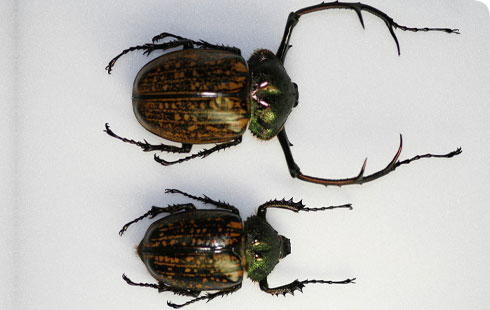Biology
Adult Cheirotonus parryi, like all other species in the genus, have a green pronotum and dark, orange-spotted elytra.
The adult male reaches a body length of 6.5cm (the female, 6cm). The outstretched forelegs of the male can be an additional 8cm.
The male and females look alike except for the very long legs which are only found in the males. The different appearance of the male and female, known as sexual dimorphism, is common in many other scarab beetle species.
It is unclear why these beetles have developed such incredibly long legs, though it is thought they are used to hold the female during mating.
The female lays eggs in decomposing wood and the larvae develop by feeding on this substrate. The larvae play an important ecological role in recycling nutrients and dead matter.
The life cycle is thought to take 3--4 years in the wild though this is shorter in captivity.
